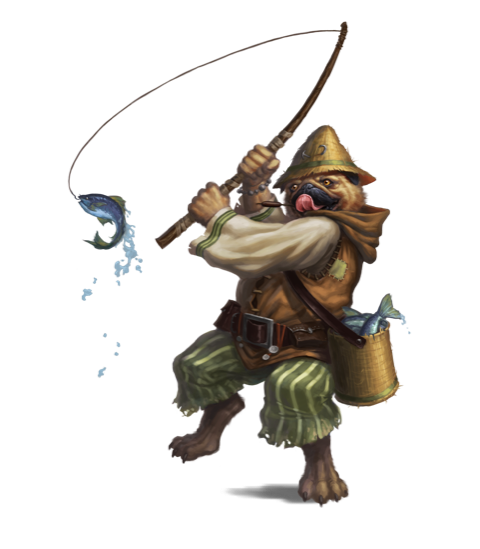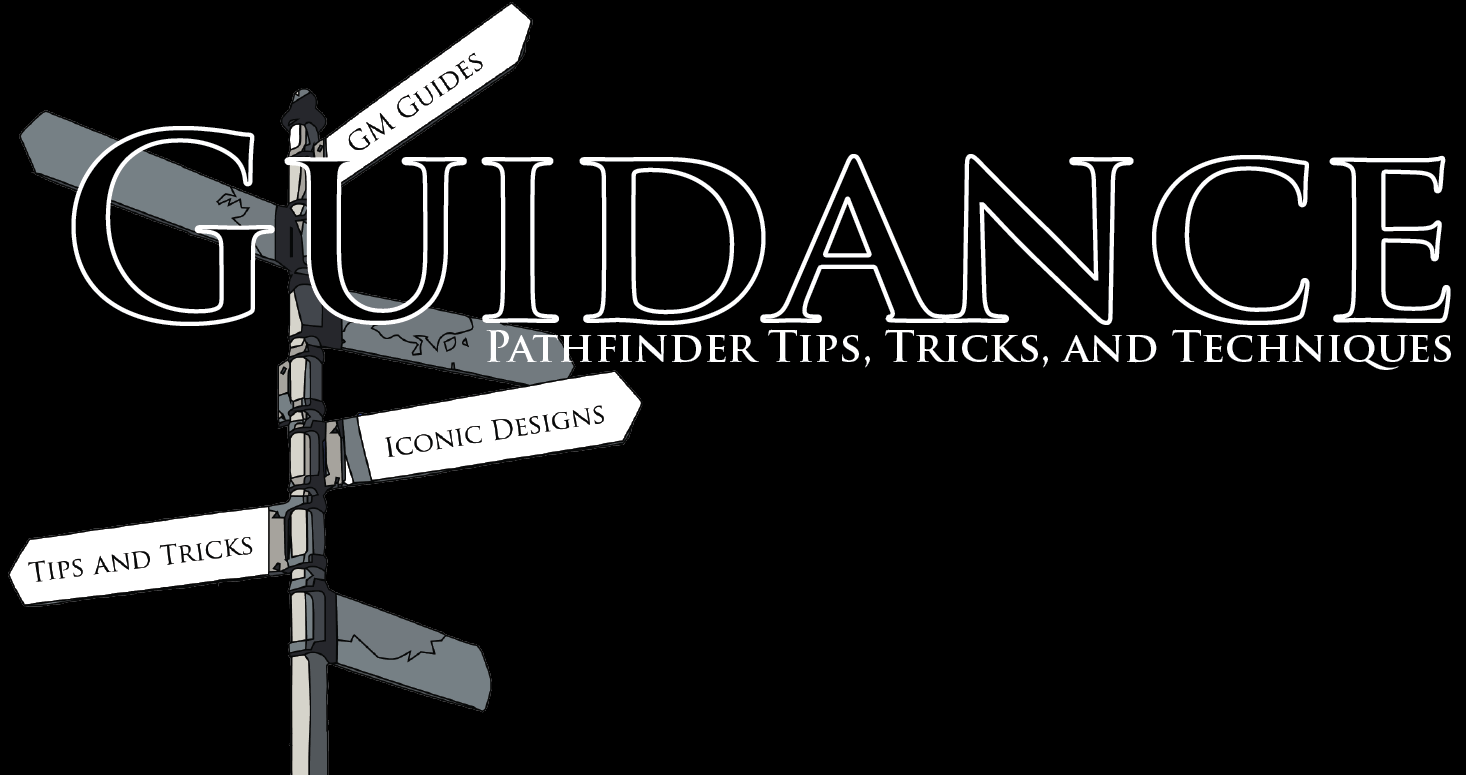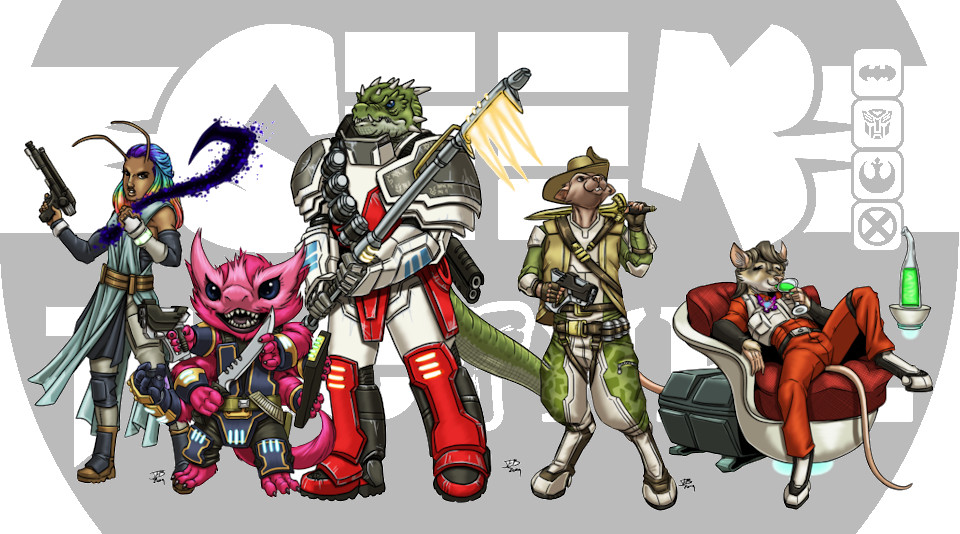Hello, and welcome to Guidance! Have you, pray tell, heard tale of a squat folk who prances through the farm-fields of the Isle of Kortos? A jovial folk known for tending the land and harvesting the fields? The literal bestest of boys? My friends, have you heard … of the shoonies?

A good boy, or the BEST boy?
If you haven’t picked up volume 3 of Extinction Curse, you’re going to want to. In addition to being a lovely adventure boasting some truly beautiful art, this volume is the first Adventure Path to ever feature a brand new ancestry: the shoonies! They’re adorable little pitt bull people who believe the god of humanity created them for pleasant company after raising the Isle of Kortos from the ocean. Listen, folks, like them or love them, they’re gonna be popular. SUPER popular. I know that they’re listed as a rare ancestry in their group, but believe me—they’re gonna blow up like skittermanders. You can quote me on this, and if I’m wrong y’all can laugh in my face two years from now, on March 25th 2020. Do it.
So, now that you’re inevitably going to have players begging you to let them play shoonies, you might ask yourself? Why shoonies? How do I fit this adorable group of 3-foot-tall dog people into my campaign? Well, that’s exactly the topic we’re going to be talking about today on Guidance!
Retcon Revolution!
So, there’s a very vicious cycle that inevitably happens to GMs who are looking to make their own campaign setting (or heavily modify the Age of Lost Omens setting). It goes a little something like this:
- GM creates an intricate setting and explains every last detail. Accounts for every major city and the precise populations of entire nations.
- A company (usually a 1st Party like Paizo but sometimes a 3rd Party like Paizo) puts out a new race / ancestry in a book.
- GM’s players IMMEDIATELY fall in love with it and beg the GM to allow them to play a character of that race / ancestry.
- The GM is caught in a no-win situation from their perspective. The player could be devastated if they’ve fallen in love with a character and can’t play it, but at the same time the GM has no real way to tie the character to the setting, and therefore the player’s experience could be diminished as a result anyway.
Personally, I’ve been part of this cycle on every level. I’ve planned intricate settings that I’ve had to expand quickly before a session to explain something the PCs wanted. I’ve wanted to play a newly published ancestry that the GM never had before in their campaign setting and couldn’t figure out where to put it. And I’ve published new ancestries and races that absolutely did this to different GMs. So, how do you add a new race to your established campaign setting when in actuality SOMEONE should have probably heard about it somehow?
You retcon, of course!

Retcon is short for retroactive continuity, and it basically means “changing something you’ve previously established using new information.” Retconning is an AMAZING tool for any storyteller’s toolbox, provided it’s done well. A good retcon needs to cover three important bases:
- Compatibility
- Believability
- Utility
Compatibility
A good retcon needs to be compatible with existing lore. If a retcon doesn’t abide by the fundamental rules of the setting, the chance of your players buying it as a reason to be is extremely slim. This goes back to the suspension of disbelief; a retcon that isn’t compatible with the story thus far shatters suspension of disbelief by making the impossible seem to happen.
Believability
Being compatible with a story isn’t enough to make a good retcon, however. In addition to being compatible your retcon needs to be believable. This one is much harder to pull off than mere believability though—its easy to make something plausible; you just use Yes/No logic to see if something could work. But for something to make sense, every character involved needs to feel like its playing its part in a manner that fits previous bits of information. One of the best ways to do this is to come up with the thing you want to retcon and then break it into pieces, giving each piece to your players or readers one at a time, out of order. This allows your players to take each individual piece of information as simply information, and only with time figuring out that the rough edges are actually the markings of a jigsaw puzzle.
Utility
The final element to a good retcon is utility. What purpose does the retcon serve? Does it add anything of value to the world or the story? In our case, allowing players to play the characters they envision is often a worthy purpose, but when we’re talking value, what sort of element does adding the retcon bring? Players aren’t going to like them if you tell them they can play the exotic race they want only for it to never matter; in my experience, the players who are okay with it are also the ones who are so jaded that they’ve come to expect getting to play what they want with zero additional effort added by the GM.
Retconning in Practice: The Shoony
Okay, now that we have some guidelines for retconning, let’s see if we can put them into practice with the shoonies. Here’s what we have to work with, according to Paizo’s blog:
“Diminutive humanoids who resemble squat, bipedal dogs, shoonies are sometimes mistaken for weak and insular pacifists. However, their sheer perseverance, incredible work ethic, and resourceful use of diplomacy make shoonies far from helpless.
According to shoonies, Aroden created their kind to provide him with pleasant company soon after he created the Isle of Kortos. Shoony culture is rooted in this myth and its implications, which help to explain the ancestry’s long reputation for hospitality, good will, and pacifism. War is antithetical to the shoony way of life; shoonies rely on cooperation and persistence to make their way through a world that can seem at times hellbent on destroying them. Shoonies are unflappable in their optimism and always see the best in others, even when faced with frequent subjugation and exploitation that might create bitterness or xenophobia among other societies. To shoonies, peace is a goal always worth striving for, and no villain is beyond redemption, so they aim to resolve problems with peaceful solutions.”
Okay, so let’s take this information and apply our three rules to see where it stands.
- Compatibility: The major bit of “connecting” lore that we have hear is that shoonies believe that Aroden created them for company. This is pretty compatible with Pathfinder lore; Aroden created the Isle of Kortos by raising the Starstone up from the ocean. He was a mortal at that time, albeit an incredibly powerful one who had already performed miracles of magic across the world (such as in Arcadia, the topic of which is the basis of Paizo Developer and Know Direction staffer Luis Loza’s adventure, Borne by the Sun’s Grace). Since the current lore says Aroden was granted godhood after raising the Starstone from the depths of the ocean, if Aroden created the shoonies as a deific act that would certainly fit. (Although creating the shoonies as a mortal wizard certainly has even more … creepy connotations!)
- Believability: Wizards doing crazy things is sort of a fantasy trope; it has been in “modern fantasy” ever since Gandalf in Lord of the Rings and it’s a trope that’s literally older than storytelling. Considering that the shoonies live pretty much exclusively on the island that Aroden created, this is a fairly believable tale. One detail that isn’t mentioned in the summary—shoonies are rare, mostly because they’ve noted lower birth rates since Aroden’s death. That detail is another interesting tidbit that, for me, makes the tale even more believable. Their rarity combined with the fact that they’re pacifists and don’t seem to like to cause problems is a pretty good reason why no one’s really heard of them up until this point either. Word just doesn’t spread quickly about folk who live ordinary lives and do ordinary acts of good, after all.
- Utility: For me, the utility of the shoony “retcon” is sort of the biggest issue they have. What does adding the shoonies to the Age of Lost Omens actually do? What kind of stories does it let Paizo tell? With the description we have, they’re sort of an underdog (heh) farmer archetype; a whole ancestral group of them. A purely pacifist culture is droll, sure, but pacifism isn’t inherently a trait that’s an interesting thing to tell a story with. Shoonies are kind of the anti-goblin; they exist to be saved, really, and that’s about it. For the addition of the shoonies to be great, they need a storytelling utility that they don’t currently have. So why not brainstorm a few?
Teaching a New Dog New Tricks
So, shoonies don’t really have many stories inherent to their ancestry. Let’s talk about some additional lore we can add to the ancestry that doesn’t compromise their strong believability or compatibility with the Age of Lost Omens. When we’re looking at storytelling, we want to try and create hooks that are interesting and flavorful first and foremost, adding an element that gives them a role in the story. Here’s a few samples that you can use as an example.
Aroden absolutely created the shoonies, and he was mortal when he did.
Paizo’s site mentions that shoonies believed Aroden created them. This is kind of appropriate, seeing as Aroden is the god of humanity and humanity did create dogs through selective breeding. Now, while it’s easy to say that Aroden just magicked them into existence, maybe turned a common dog into a shoony the way Cayden Cailean transformed the soul of his own companion into the first cayhound. it might serve your story more if Aroden was still a mortal wizard when he created the shoonies. Maybe he used magic that basically imparted what amounts to generations of selective breeding and behavioral training on a kind of creature that we already know to create them. Are there any other canine humanoids in the game that Aroden might be motivated to “get rid of?”
Oh totally. Gnolls.
Gnolls are hyena-like humanoids, and while in the real world hyenas are more akin to cats than dogs, it kind of “feels” right to have a story that goes something like this:
“After raising Kortos from the Inner Sea, Aroden set to work building the Starstone Cathedral within which he would house the Starstone, protecting it from those who would seek to use its power for evil as the aboleths did. Despite his immense powers, constructing the cathedral that would one day become Aroden’s heart required months of toil, and during that time a cartel of gnoll slavers from Katapesh happened upon the newly-risen Isle of Kortos as they sailed north in search of prey. The gnolls landed upon Kortos’s shores, the first humanoids ever to do so after Aroden himself, and found the skeleton of what would become the Starstone Cathedral. In their hubris, the gnolls attached Aroden as he labored but proved no match for the would-be God of Humanity. With a flick of his wrist, the snarling gnolls were sated, withering in size, form, and ferocity. Aroden called the creatures he created shoonies and set them to task helping him protect the Isle of Kortos.
The shoonies are guard dogs.
While I haven’t read much of Extinction Curse, the synopsis from PaizoCon told us that there are pillars located around the Isle of Kortos and these pillars are responsible for supplying life energy to the island somehow; when the pillars run out of energy, the land and all living upon it starts to wither and die. The shoonies are likely affected by this over the course of the adventure, being farmers and harvesters mostly. But what if keeping vigil over these towers was something Aroden tasked them with that, over the course of thousands of years, they’ve forgotten? What if the shoonies are guards the same way my yorkie Archie is a guard; they’re not there to fight, basically just to make a ton of noise to alert people with actual power.
In my dog’s case, Archie barks to alert my family that someone’s coming up to the house. Maybe the shoonies are all farmers because the crops would logically be the first thing affected should one of these pillars malfunction, and their “barking” is to go get help from people more capable of dealing with it.
In Conclusion,
I hope you found this article on retconning and how you can use it to enhance your world useful. I also hope you found the shoonies fun and interesting; even if they don’t have a lot of storytelling utility right now, I do think they’re an adorable addition to Pathfinder 2E and I’m happy we’ve got them. I look forward to seeing what other lovely things Paizo does with the shoonies going forward, especially as they carve out a niche for their newest (and doubtlessly instant hit) ancestry.
Note from Alex: If you liked this article, consider purchasing Pathfinder AP: Life’s Long Shadow from Paizo or your FLGWebsite. With everything that’s happening right now, gaming companies are going to be hit REALLY hard as all the means of printing and shipping are shut down completely. Even if you’re like me and prefer print products to digital ones, consider purchasing PDFs from your favorite companies in the meantime. It’s a scary thought, but these are tough times ahead for the Gaming Industry. Without your support, we could very well see the industry as a whole wither and starve itself.
Alexander “Alex” Augunas has been playing roleplaying games since 2007, which isn’t nearly as long as 90% of his colleagues. Alexander is an active freelancer for the Pathfinder Roleplaying Game and is best known as the author of the Pact Magic Unbound series by Radiance House. Alex is the owner of Everyman Gaming, LLC and is often stylized as the Everyman Gamer in honor of Guidance’s original home. Alex also cohosts the Private Sanctuary Podcast, along with fellow blogger Anthony Li, and you can follow their exploits on Facebook in the 3.5 Private Sanctuary Group, or on Alex’s Twitter, @AlJAug.








